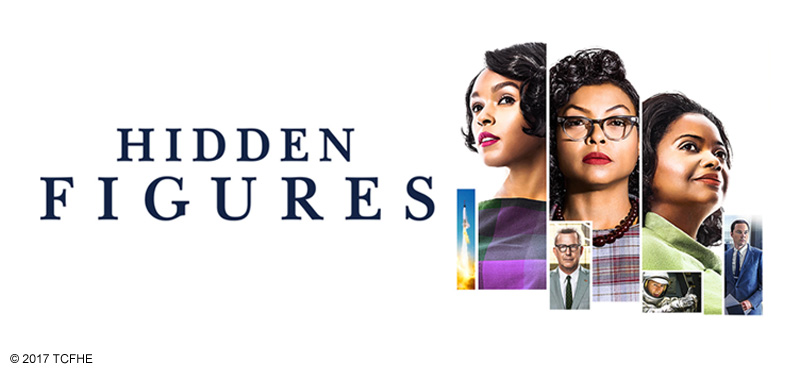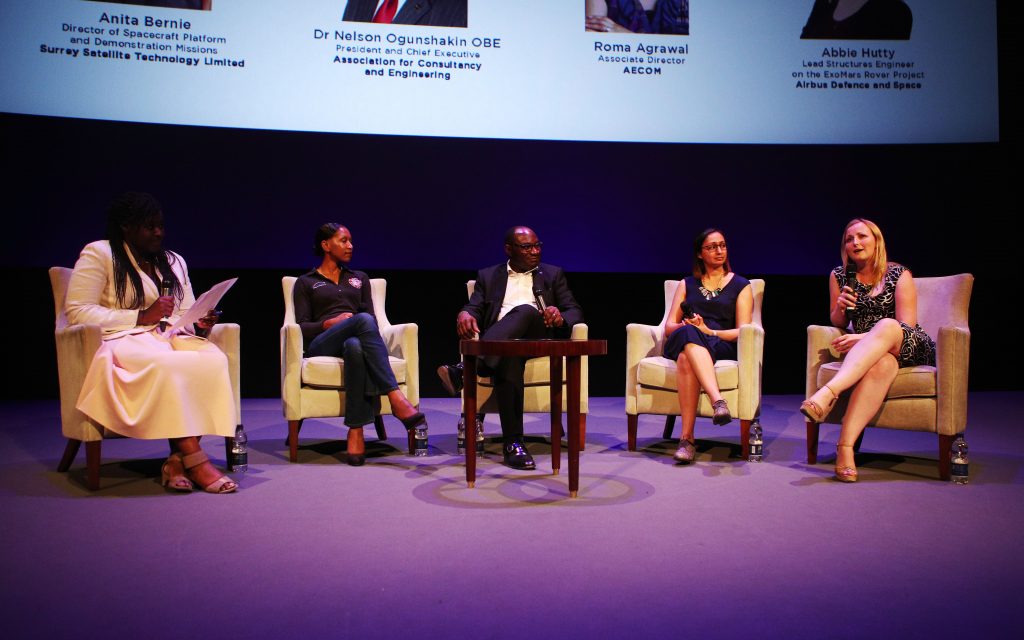To celebrate the release of Hidden Figures on Blu-ray™ and DVD on 3 July, and to mark International Women in Engineering Day, nearly 400 people gathered in the Science Museum’s IMAX this week to watch the film, which tells the story of three African-American women working at NASA, whose work was practically unknown for 50 years. Yet they enabled one of the most momentous projects in human history – the launch of astronaut John Glenn into orbit.

Hidden Figures tells the story of Katherine Johnson, Dorothy Vaughan and Mary Jackson, who worked at NASA in the 1950s and early ’60s as part of a team of so-called ‘human computers’. Their job was to calculate the launch and landing coordinates for the experimental rockets being built at the dawn of the space race. Later they would channel their formidable mathematical abilities into programming the first mainframe computers. However, for much of the film they are depicted performing highly complex calculations with a pen and paper – often more precisely than the mainframe.
Katherine Johnson, working with NASA’s Space Task Group, made some of the key breakthroughs that enabled a successful launch and return to Earth for astronaut John Glenn’s Mercury-Atlas 6 mission. Glenn – later a US Senator – became the first American to orbit the Earth and the mission paved the way for the later Apollo and Space Shuttle programmes, both of which Katherine Johnson worked on.
Mary Jackson became so fascinated by the rocket-building project that she retrained as an engineer and went on to become NASA’s first black female engineer. She had to break down more than one glass ceiling to achieve this, petitioning a court to be allowed to attend night school at Hampton High School, which was still segregated at that time.
Dorothy Vaughan not only taught herself FORTRAN in order to be able to programme the mainframes but she also trained her colleagues in this new programming language. By ensuring that they would be ready for the future, she led a team at the forefront of computing technology decades before computers were available to the general public.
Why does this matter? And why this week? Because even now, 60 years after the Russians launched the space race with their first satellite, Sputnik, only 9% of UK engineers are women and only 6% are from black and minority ethnic backgrounds.
Today (23 June) is International Women in Engineering Day (#INWED17). Established in 2014 as a national event, it proved so empowering to women in the profession that it has evolved into an international event this year. UK events include Jaguar Land Rover’s Gorillaz App Challenge in the West Midlands, in which participants will try assembling Jaguar’s first all-electric five-seater sports car, the Jaguar I-PACE Concept. An online Save an Engineer debate will ask an audience to choose which young female engineer should win a chance to enter a new world: ‘there has been an apocalypse and there is one last spot on the boat that will sail away to start a new beginning’.
The special screening of the film took place at the Science Museum on 19 June in partnership with Twentieth Century Fox Home Entertainment, the Royal Academy of Engineering, the Queen Elizabeth Prize for Engineering and EDF Energy’s Pretty Curious campaign. In a discussion panel beforehand, the audience heard from engineers who are pioneering the latest developments in space technology: Anita Bernie, director for spacecraft platforms and demonstration missions at Surrey Satellite Technology Limited, and Abbie Hutty, Lead Structures Engineer on the ExoMars Rover Project at Airbus Defence and Space, were joined by Dr Nelson Ogunshakin OBE, President and CEO of the Association for Consultancy and Engineering, and structural engineer Roma Agrawal, Associate Director at AECOM. Space scientist and broadcaster Dr Maggie Aderin-Pocock MBE, presenter of BBC2’s The Sky at Night, chaired the panel.

“We need lots more creative people coming into engineering careers,” said Maggie. “Engineering is joy.” The panel agreed. “We owe it to the Hidden Figures women and others like them to continue fighting the battle for equality”, said Abbie. Nelson emphasised that diversity and inclusion is a business imperative and encouraged companies to act: “people talk the talk but they don’t always walk the walk,” he said. Anita spoke of the need to provide more role models to encourage diversity, and for companies to allow more flexible working arrangements for employees with family responsibilities. All agreed that mentoring is vital: “Think about your workplace,” said Roma, “is there any way you can better support people around you from minority groups?”
The event was introduced by Academy President and Fellow of the Science Museum Dame Ann Dowling. Next week, Dame Ann will explore why girls make the subject and career choices they do when she takes over Radio 4’s Woman’s Hour as a guest editor on Wednesday 28 June. She will also discuss the huge breadth of modern engineering – from medical imaging and therapy, to wi-fi and mobile phones. Dame Ann will also be combining her research on aircraft noise with her passion for opera, as she discusses the power of the human voice.
The power of the #INWED17 message this week could not be clearer: the engineering profession invites women and men of all backgrounds to join in as we reach for the stars. You are no longer hidden figures.